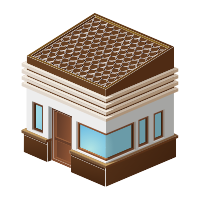Three Ways to Minimize Roof Wind Damage
Stormy weather and high winds can lead to extensive roof damage. Sometimes the only risk is the loss of a few shingles, but in other cases, a roof can be completely torn from a building. The following tips can help you minimize the chances of wind damage to your roof.
1. Repair Damaged Shingles
Damaged shingles are the main cause of extensive roof damage during a storm. If a shingle is cracked, beginning to curl, or otherwise not properly installed, then it is more likely to blow off during a storm. Once a shingle is torn from the roof, the neighboring shingles are more prone to blow off; before you know it, you have major roof damage. Have your roof inspected annually if you live in a storm-prone area. The roofer will replace any shingles that are showing the early signs of damage. They will also make sure that no shingle nails have failed and will replace any that have come loose.
2. Brace Gable Ends
The gable ends of a roof are the most prone to uplift during high winds, which can tear off your entire roof. Ideally, your roof should not be designed with gables if wind damage is common in your area. If you do have gables, a roofer can retrofit the gables with bracing to help reduce the chances of uplift. Retrofitting also means installing better wall bracing between the gable end and the walls of your home, so that uplift won't create a gap that allows water to seep inside. Installing sealed vents at the gable end can also help minimize uplift concerns. Another option is to shorten the gable overhang so less of a flat plane is impacted by high winds.
3. Install Hurricane Clips
Hurricane clips are standard protocol during roof installation in areas prone to hurricane-level storms, but they are also a good idea if you live in an area that experiences tornadoes or high non-hurricane winds. These braces can be retrofitted to your roof—there is no need to have a new roof installed in order to have it clipped. Hurricane clips are typically installed on the underside of the roof, so the roofer will need access to your attic. The clips wrap around the rafter and clip to the roof sheathing. While this won't prevent the loss of shingles, it will ensure that the entire roof isn't lifted off of your home.
If you are concerned about wind damage and your roof, contact a roofing company to go over your options.

